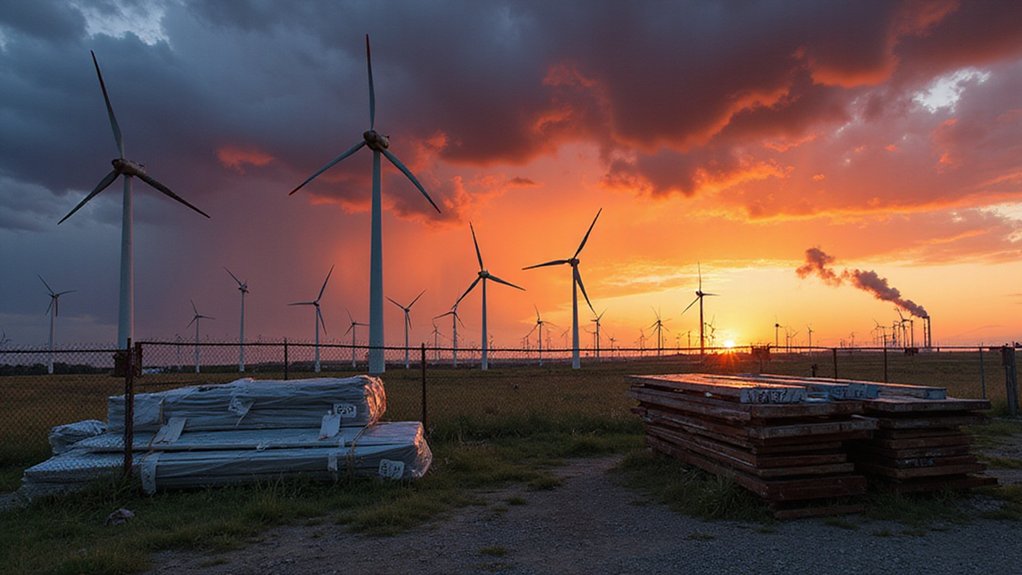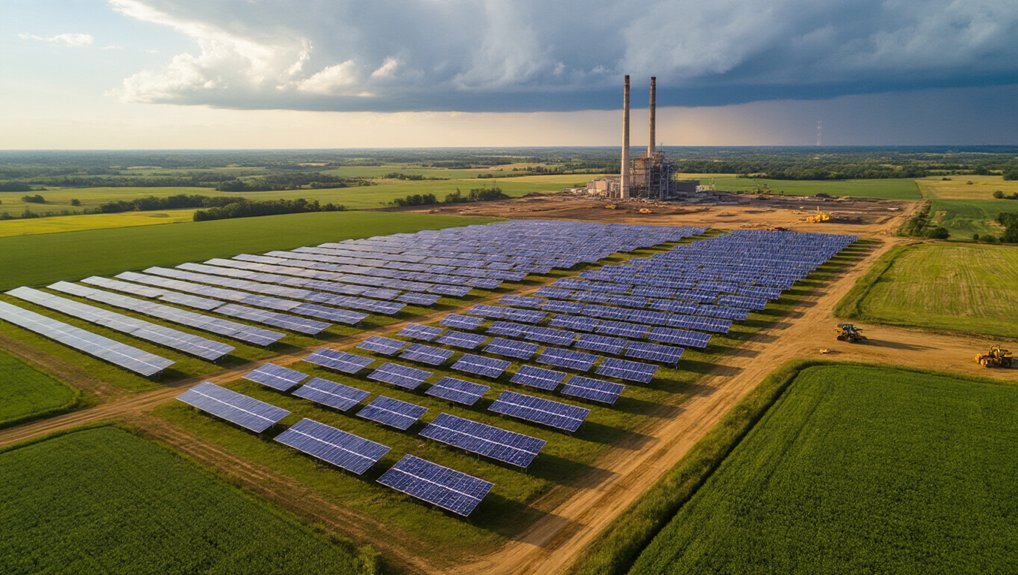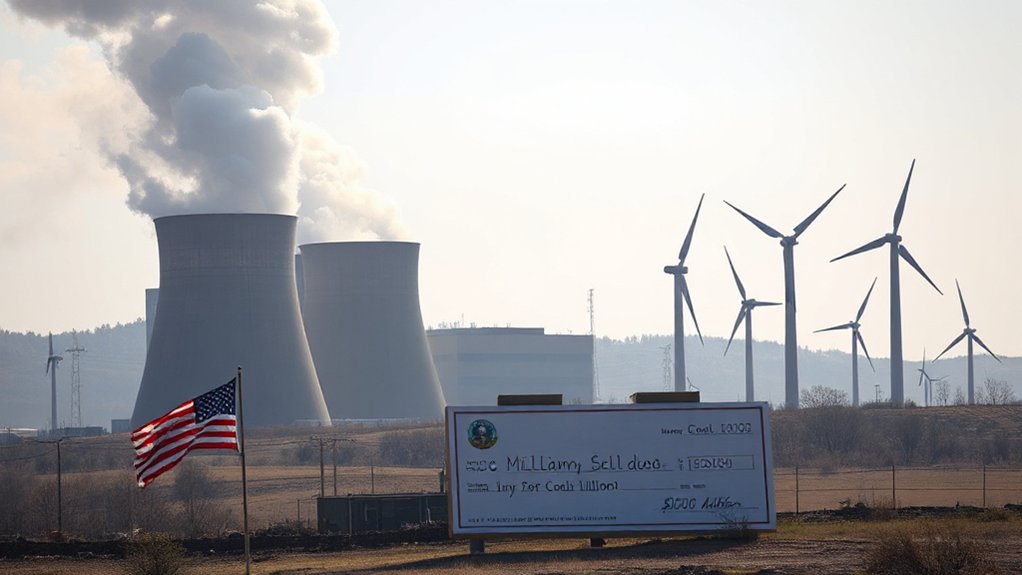Trump’s tariffs on steel, aluminum, and solar components are undermining U.S. climate goals while his administration claims environmental victories. These trade policies have increased renewable energy costs by up to 25% and drastically reduced solar imports from key Asian suppliers. Analysts project a $1,300 tax increase per household and potential GDP losses of 0.64%. With higher EV prices and disrupted supply chains, these policies threaten to add 750 million tons of CO2 emissions by 2030. The economic and environmental consequences deserve closer examination.
While President Trump’s tariffs aim to boost American industry, they’re causing major problems for clean energy efforts. The 25% tariffs on steel and aluminum announced in March 2025 have increased costs across renewable energy sectors.
Solar cell components now cost 20% more, while steel mounting systems for renewable installations rose by 18%. Aluminum frames for solar panels jumped 25% in price.
Renewable tech faces cost nightmare: solar components up 20%, mounting systems 18%, aluminum frames 25%.
The solar industry has been hit particularly hard by supply chain disruptions. Southeast Asian nations, which supply 80% of US solar imports, now face significant tariffs.
Solar panel imports from Vietnam have fallen by 66.2%, while Malaysian imports dropped by 80.5%. Even more dramatic, imports from Thailand and China plummeted by 91.7% and 88.0% respectively.
Electric vehicle adoption faces new hurdles too. While Chinese EVs aren’t commonly imported to the US, the proposed 100% tariff on all imported vehicles would make EVs less affordable.
Imported EVs make up about 30% of the US market, potentially slowing the shift to cleaner transportation. Meanwhile, Chinese EV makers gain ground globally as US companies struggle with supply chain issues. Legacy automakers are being forced to reassess manufacturing strategies due to the unpredictable trade environment.
The economic costs are significant. Trump’s tariffs amount to an average tax increase of nearly $1,300 per US household in 2025.
The US economy is projected to lose 0.64% in GDP, while China faces a 0.68% reduction.
These policies undermine climate action on multiple fronts. The administration is walking back US climate commitments and threatening cuts to the Inflation Reduction Act‘s support for clean-tech industries.
The planned withdrawal from the Paris Agreement further weakens international climate cooperation. These setbacks come at a time when alternative energy resources could help the US achieve both energy independence and emissions reduction.
Despite being branded as “Liberation Day” to boost domestic manufacturing, these tariffs create essential supply chain gaps for renewable components.
They’re slowing the adoption of clean energy solutions at a vital time for climate action. These tariffs could add 750 million tons of CO2 emissions to U.S. projections by 2030, severely jeopardizing climate goals. While claiming to protect American interests, these policies may actually hinder both economic growth and environmental progress.
References
- https://www.carbonbrief.org/experts-what-do-trumps-tariffs-mean-for-global-climate-action/
- https://www.winssolutions.org/impact-2025-us-tariffs-on-sustainability/
- https://taxfoundation.org/research/all/federal/trump-tariffs-trade-war/
- https://altruistiq.com/state-of-sustainability/resource/the-environmental-price-tag-of-trumps-tariffs
- https://www.lse.ac.uk/granthaminstitute/news/if-elected-donald-trumps-proposed-tariffs-would-damage-the-economies-of-united-states-china-and-europe-and-set-back-climate-action/








